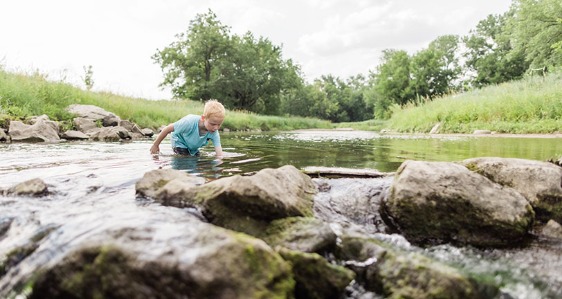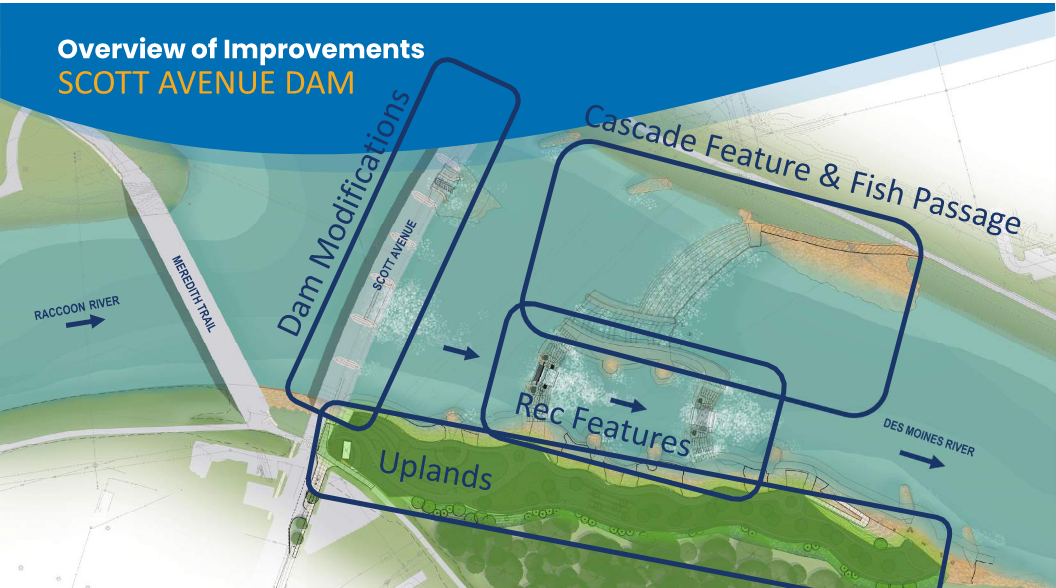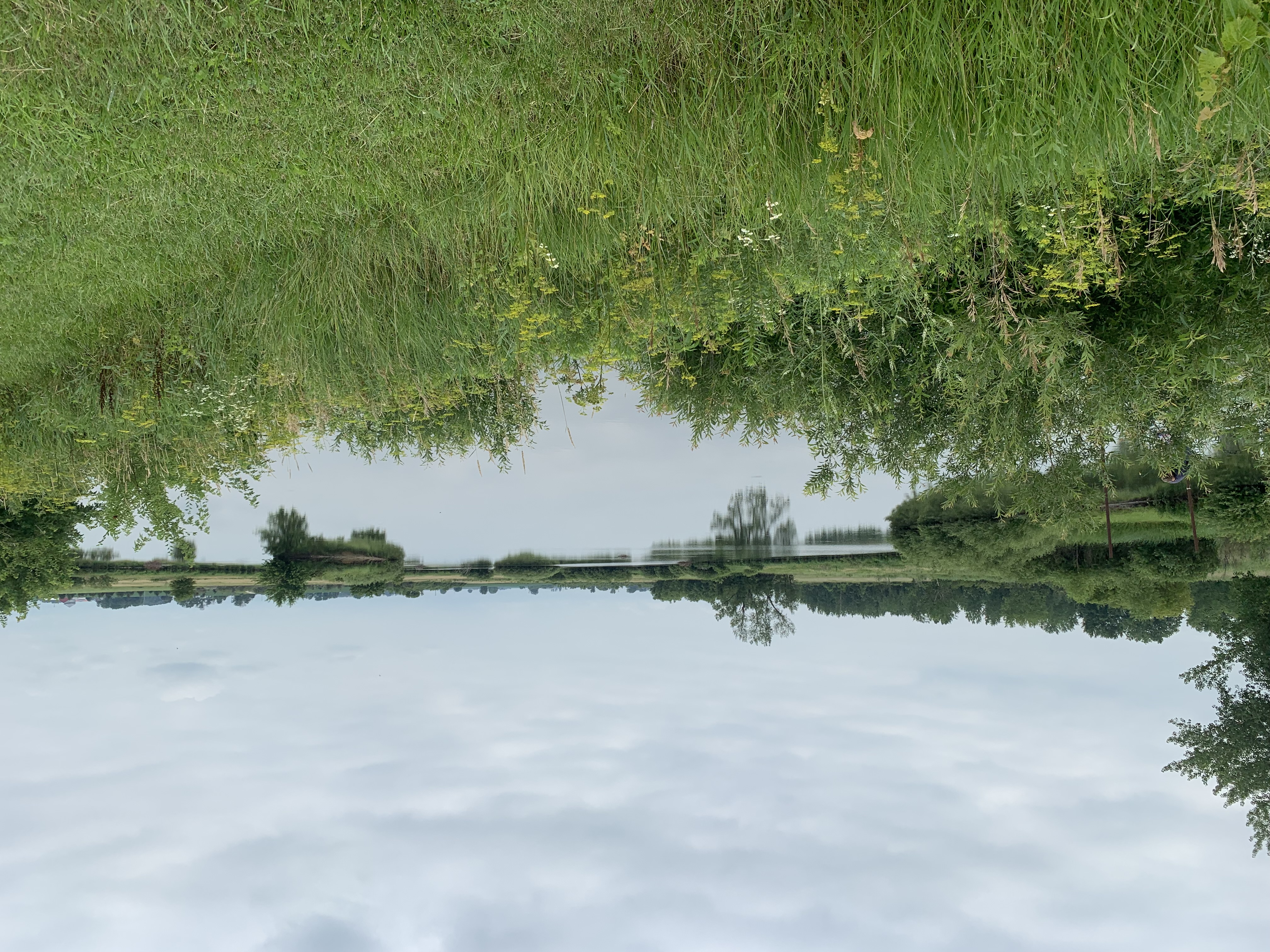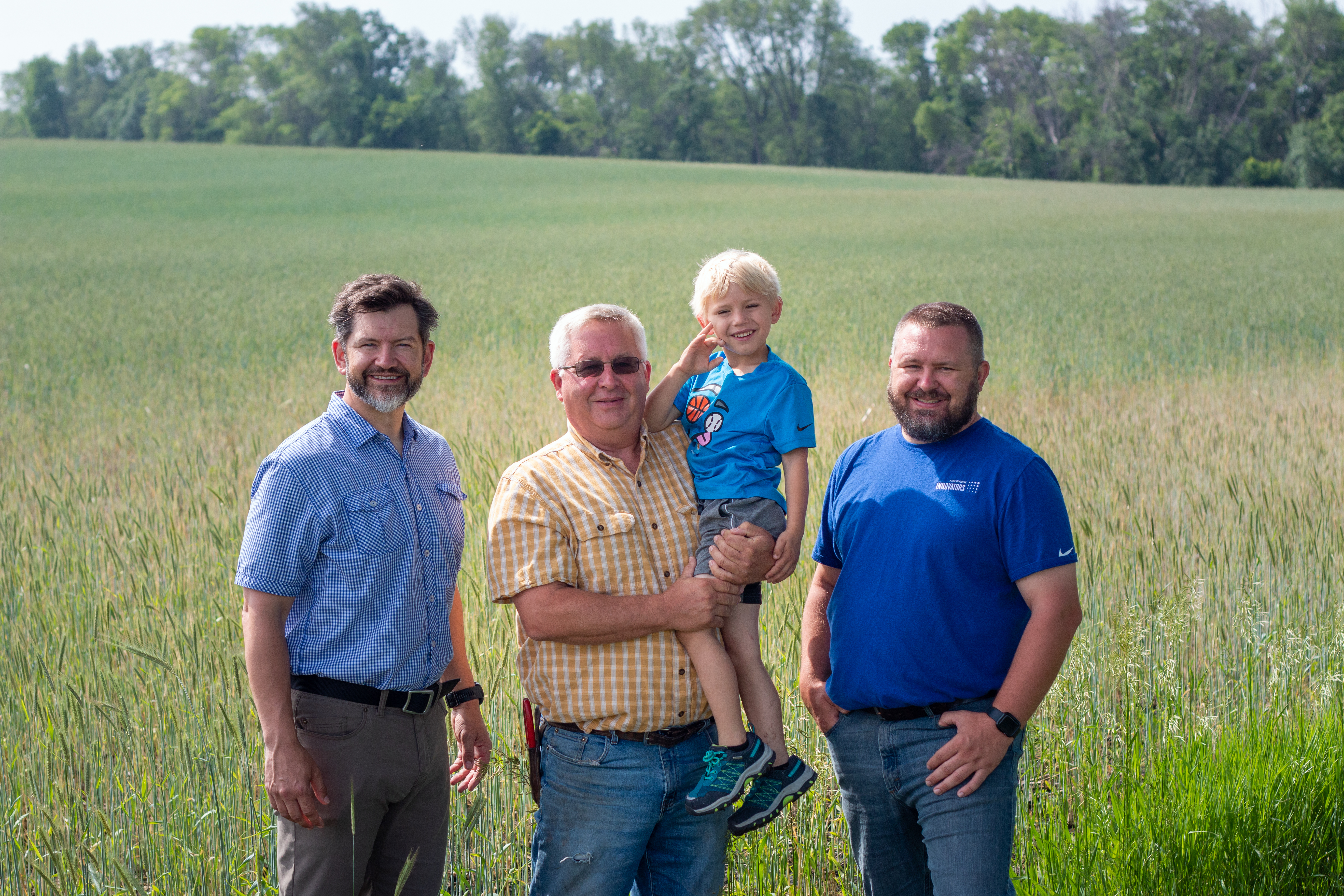By Dan Looker
ICON Water Trails continues building momentum for 150 miles of waterway recreation while the Wetland Wave supports water quality to improve the recreation experience.

DES MOINES, Iowa (IAWA) – Not far from Hannah Inman’s office south of downtown Des Moines, the Des Moines River below the Scott Street Dam is a jumble of steel pilings, earth moving equipment, and piles of concrete scraps.

In about a year, all of this will enable kayakers to safely paddle through artificial rapids over what was once a deadly low-head dam that trapped and drowned boaters.
Inman is CEO of the Great Outdoors Foundation (GOF), which helps raise funds for safer and cleaner water that will attract more users of the Iowa Confluence Water Trails (ICON). GOF also directly supports ICON, whose goal is to create a recreation network along 150 miles of waterways in central Iowa.
Momentum is growing. Central Iowa residents are seeing ICON TV ads promoting these trails. So far, ICON has 15 portages and boat launching sites along the Des Moines and Raccoon Rivers and smaller creeks, with about 35 more planned. Two other downtown dams, like the one near Inman’s office, are slated to be made safer, too.
In summer, the river through Des Moines is already dotted with anglers, rowing crews and jet skis.
Still, the water itself can be less than inviting. Cleaning it is a key goal of the Great Outdoors Foundation and ICON, who works in step with others like agricultural organizations, government agencies, and private conservation programs.
GOF’s main water-cleaning projects are wetlands.
“They’re hard to do but they have a big impact. And they’re permanent,” Inman says. “We provide the gap funding. It’s the last thing needed to help these projects.”
GOF works with John Swanson, Polk County’s Water Resources Supervisor, who has wetland projects underway in urban and rural parts of the county. Meanwhile, their work reaches even further upstream.
“We have a portfolio of $50 million for wetlands in northwest Iowa,” Inman says. “The co-ops have been great partners. The counties have been great partners.”
They know landowners who want to install wetlands, she adds.

Closer to the city, Swanson pioneered the “batch and build” method of installing edge-of-field practices on farms in metro area counties. These are bioreactors and saturated buffers that slow drainage tile water long enough for microbes to remove nitrates. Swanson lined up financing and contractors willing to install them on several farms at once. That simplified the process, making these practices more attractive to landowners.
“We built about 150 of those,” Swanson says.
“In the past few years we’ve done quite a few wetlands, too, but we haven’t done agricultural water quality wetlands,” he adds.
So last year, a project dubbed the Wetland Wave, was launched by Polk County, GOF, and other private and government groups to bring wetlands to tile-drained farm fields, mainly in the fertile glaciated central Iowa region known as the Des Moines Lobe. (Interested landowners can contact staffers at two other partners: Michael James, Water Quality Initiative Coordinator at the Polk Soil and Water Conservation District, michael.james@ia.nacdnet.net, or Ruth McCabe, Wetland Coordinator at Heartland Cooperative, rmccabe@heartlandcoop.com ).
Swanson needs no encouragement to praise wetlands, as he sometimes does to school children.
“Wetlands are nature’s way of treating water quality,” he says. “They’re like nature’s kidneys.”
To work well, three-fourths of a wetland needs to be three feet deep or less.
“That builds an anaerobic environment in the shallow water zone,” he says. There, microbes digest more than half of the nitrate nitrogen from dissolved fertilizers flowing into the wetland. Other fertilizer ingredients settle onto the bottom. Cattails and other water plants use those nutrients as well. Wetlands remove pesticides and slow floodwaters surging toward streams. They provide wildlife habitat, from fish and frogs to waterfowl and more.
“They really do everything,” he says. They also treat water flowing from a much larger area than smaller edge-of-field practices that mimic wetlands. A saturated buffer might treat water from 20 to 40 acres.
With wetlands, “on average we’re looking at sites that treat 500 to 1,000 acres,” he says.
If any of this has a downside, it’s mainly that planning, funding, engineering and construction can take about two years compared to a year for the smaller batch and build projects.
Swanson’s enthusiasm for wetlands is contagious.
Nick Helland, a seventh generation corn, soybean and hog farmer, was one of the first to catch the wetland wave. A wetland of about two acres will be un

der construction on his land early this summer.
Helland, who farms with his father, uncle and cousin, already has both kinds of edge-of-field practices.
“John and I both loved the idea of having a farm with all three of these practices, especially north of Des Moines,” Helland says. He also plants cover crops and uses no-till to grow soybeans. The wetland will help with remaining conservation issues.
“It’s clear to me that some erosion was coming from a neighbor’s field,” he explains. “That water surge in heavy events, this will help contain that and filter that out.”
The wetland will sit next to Big Creek and is two miles north of the state park by that name.
Helland also enjoys hunting and fishing.
“I’d be lying if I said the wildlife benefit wasn’t a factor as well,” he says of his approval for a wetland.
Still, even with Helland’s appreciation of wetlands, the planning and engineering would be daunting without the help of the Wetland Wave. “They’re taking care of all that. And I’m not going to bear the construction cost,” he says.
“It’s one task that I probably would not get done without John driving it. I give him a lot of credit for that,” Helland says.
Swanson, in turn, gives added credit to the Great Outdoors Foundation, which finds funding for projects that might not otherwise get done.
“That’s what they do,” Swanson says. “They know these connections and how to get money.”
At the Foundation, Inman works with both private donors and companies. The Foundation has been around for about 30 years to support conservation in Polk County but it expanded its mission about eight years ago.
“We’ve always used recreation as a catalyst for conservation,” she says.
Now that catalyst will also make Iowa’s rivers cleaner, thanks to wetlands.
“Right now we have 19 wetlands under design where landowners want to do this,” Swanson says. He and other partners have identified about a thousand potential sites in Polk, Dallas and Boone counties alone.
